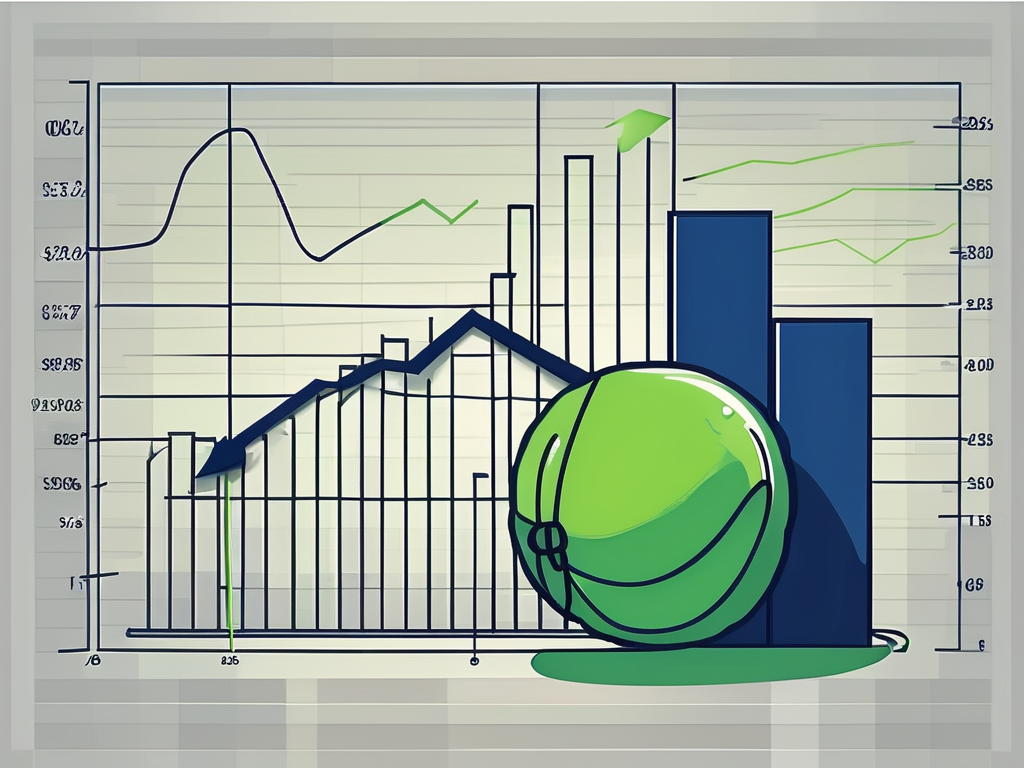Talk to Sales: (401) 200-6026

In today’s competitive business landscape, having a comprehensive and accurate sales analysis report is crucial to stay ahead of the game. A sales analysis report provides valuable insights into your company’s performance, identifies areas of improvement, and helps you make informed decisions for future growth. However, many businesses are left disappointed with the results they derive from their sales analysis reports. In this article, we will explore the importance of a sales analysis report, common issues faced, ways to improve it, and how technology can aid in the process.
Understanding the Importance of a Sales Analysis Report
A sales analysis report is a detailed examination of your company’s sales data, which includes revenue, units sold, customer demographics, and more. It helps you gauge the effectiveness of your sales strategies and identify areas for improvement. By analyzing your sales data, you can gain valuable insights into your target audience, product performance, and sales trends.
Expanding on the significance of a sales analysis report, it is essential to note that this report serves as a roadmap for businesses to navigate the complex landscape of sales. It not only provides a snapshot of past performance but also acts as a guide for future decision-making and strategic planning. Through a comprehensive analysis of sales data, companies can make informed choices that drive growth and profitability.
Defining a Sales Analysis Report
A sales analysis report is a compilation of sales data collected over a specific period. It provides a comprehensive overview of your sales performance, highlighting key metrics and trends.
Moreover, a sales analysis report delves deep into the intricacies of sales figures, offering a nuanced perspective on customer preferences, market dynamics, and competitive positioning. This in-depth analysis goes beyond surface-level numbers to uncover hidden insights that can shape the trajectory of your sales efforts and overall business strategy.
Why is a Sales Analysis Report Crucial for Business?
A sales analysis report is crucial for several reasons:
- Identifying trends: By analyzing your sales data, you can identify patterns and trends in customer behavior, helping you align your sales strategies accordingly.
- Evaluating performance: A sales analysis report allows you to evaluate your company’s overall sales performance, highlighting areas of success and areas that need improvement.
- Identifying opportunities: By understanding your customers’ preferences and buying patterns, you can identify new opportunities to maximize your sales potential.
In addition to the aforementioned benefits, a sales analysis report also plays a pivotal role in fostering a culture of data-driven decision-making within an organization. By relying on concrete sales data and actionable insights, businesses can make strategic choices backed by evidence, rather than relying on gut feelings or intuition alone.
Common Issues with Sales Analysis Reports
While a sales analysis report can provide valuable insights, there are common issues that businesses face when interpreting the data:
Inaccurate Data and Its Impact
One of the primary issues with sales analysis reports is inaccurate data. Inaccurate data can lead to incorrect conclusions and misguided business decisions. It is crucial to ensure data accuracy by regularly auditing and validating the data sources.
Furthermore, inaccurate data can stem from various sources such as human error in data entry, technical glitches in data collection systems, or inconsistencies in data formatting. Addressing these issues requires a comprehensive approach that involves implementing data validation processes, training staff on data entry best practices, and utilizing advanced data cleaning tools to maintain data integrity.
Overlooking Key Metrics
Another common issue is the overlooking of key metrics. Businesses often focus on revenue alone, neglecting other important metrics such as customer acquisition cost, profit margin, and customer lifetime value. It is essential to consider a holistic approach and identify the right set of metrics for your business.
Moreover, key metrics can vary depending on the industry, business model, and strategic goals of the company. For instance, a subscription-based business may prioritize metrics related to customer retention and churn rate, while a retail business may focus on metrics related to inventory turnover and average order value. Tailoring your analysis to include a comprehensive set of key metrics can provide a more nuanced understanding of your sales performance.
Misinterpretation of Data
Misinterpreting data can have detrimental effects on your decision-making process. It is vital to analyze data from different angles and consider multiple factors before drawing conclusions. Proper training and understanding of data analysis techniques can help prevent misinterpretation.
Additionally, leveraging data visualization tools and techniques can aid in presenting data in a clear and concise manner, reducing the likelihood of misinterpretation. Visual representations such as charts, graphs, and dashboards can help stakeholders easily grasp complex data sets and identify trends, outliers, and correlations effectively.
Sell cars on the lot faster with AutoRaptor
Know if we’re the right fit within 10 minutes
Improving Your Sales Analysis Report
To overcome these common issues and improve the effectiveness of your sales analysis report, consider the following strategies:
Ensuring Data Accuracy
Data accuracy is paramount for reliable sales analysis. Regularly audit and validate your data sources, implement data cleansing processes, and establish data governance practices.
Ensuring data accuracy involves not only the technical aspects of data collection and storage but also the human element. It is essential to train your staff on the importance of accurate data entry and provide them with tools to minimize errors. Additionally, consider implementing automated data validation processes to catch discrepancies in real-time, ensuring that your sales analysis report is based on precise and up-to-date information.
Identifying and Tracking Relevant Metrics
Identifying key metrics specific to your business is crucial for an effective sales analysis report. Consider metrics such as customer acquisition cost, customer churn rate, and customer lifetime value to gain a comprehensive understanding of your sales performance.
Tracking relevant metrics goes beyond just numbers on a spreadsheet. It involves understanding the story behind the data. Consider creating visual representations of your key metrics, such as charts or graphs, to easily identify trends and patterns. By presenting data in a visually appealing manner, you can quickly communicate insights to stakeholders and drive informed decision-making within your organization.
Proper Interpretation of Data
Interpreting data correctly is crucial for deriving accurate insights. Invest in training your team on data analysis techniques and encourage a data-driven decision-making culture within your organization.
Proper interpretation of data requires a combination of analytical skills and domain knowledge. Consider conducting regular workshops or seminars to enhance your team’s data interpretation abilities and foster a collaborative environment where insights can be shared and discussed. By promoting a culture that values data interpretation, you can ensure that your sales analysis report is not just a collection of numbers but a strategic tool that drives business growth and success.
Leveraging Technology for Better Sales Analysis
Technology can play a vital role in enhancing the effectiveness of your sales analysis report. Consider the following:
Role of CRM in Sales Analysis
A Customer Relationship Management (CRM) system can provide a centralized repository for your sales data, making it easier to analyze and derive insights. CRM platforms offer features such as sales forecasting, customer segmentation, and performance tracking.
Benefits of Automated Sales Analysis Tools
Automated sales analysis tools can streamline the process of generating sales reports and analyzing data. These tools often provide customizable dashboards, real-time data updates, and advanced analytics capabilities.
The Future of Sales Analysis
The future of sales analysis lies in leveraging intelligent technologies like artificial intelligence and predictive analytics:
Predictive Sales Analysis
Predictive analytics uses historical data, machine learning, and statistical algorithms to forecast future sales trends and customer behavior. Embracing predictive sales analysis can help you proactively identify opportunities and make informed decisions.
The Role of AI in Sales Analysis
Artificial intelligence can automate data analysis, identify patterns, and provide actionable insights. AI-powered sales analysis tools can help businesses save time and make data-driven decisions with increased accuracy.
In conclusion, a sales analysis report is essential for businesses seeking to optimize their sales strategies, improve performance, and identify growth opportunities. By addressing common issues, implementing best practices, and leveraging technology, you can enhance the effectiveness of your sales analysis report and stay ahead of the competition.
Transform Your Sales Strategy with AutoRaptor
Ready to take your sales analysis to the next level? Discover how AutoRaptor’s Dealership CRM can revolutionize your approach to sales data and drive better results. Our experts are eager to discuss your dealership’s specific needs and show you how our CRM can make a significant impact. Simply fill out the form to schedule your demo, and we’ll provide a personalized tour of AutoRaptor’s features. Join countless dealerships saving an average of $10.8k per year by switching to our intuitive CRM solution. Don’t wait—book a quick demo today and see if AutoRaptor is the right fit for your business within just 10 minutes.
Subscribe to our Newsletter
Resources to help your dealership convert more leads into sales, retain more customers, and market inventory smarter, straight to your inbox every Sunday.




